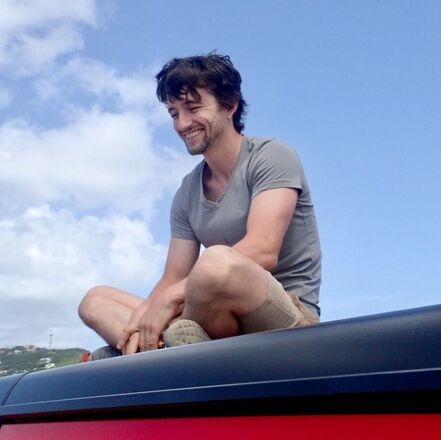Former Post-Doctoral Scholar
|
Alex Kingston
Alex got her BS from Arizona State University. She received her PhD from the University of Maryland, Baltimore County, where she studied extraocular photoreception with Tom Cronin. Alex joined the Speiser lab in the Fall of 2015 where she began studying the molecular, structural, and functional complexities of dispersed visual systems in chitons and scallops. Alex also studies the co-evolution of weaponry, armor, and vision in snapping shrimp. Alex enjoys (studying, not eating) crustaceans and molluscs, coffee, making messes, and logic. As of Fall 2020, Alex is an Assistant Professor of Biological Science at the University of Tulsa. |
Graduated PhD Student
|
Dan Chappell
Dan got his B.S. from Ohio University. He completed his PhD at UofSC in 2022 and is now an NRC post-doc at the Air Force Research Lab. Dan works on a wide range of questions in different systems. His PhD project concerned the neurobiology of animals with distributed visual systems such as chitons and scallops. Dan enjoys rock climbing, injecting chitons with fluorescent dyes, and being another Dan in the lab. |
Former Research Specialist
|
Hazel Havens
Hazel got their BS in biology from USC in 2016. As an undergraduate in the Speiser Lab (2014-16), they studied the neural processing associated with the distributed visual system of scallops. Later, as a Research Specialist (2016-18), they built custom computers, specialized optical devices, and automated electrophysiological systems. Along with adding to their research toolkit, learning to speak machine has helped Hazel hone their questions about processing in our non-silico subjects. Hazel appreciates food, dance, and when spec sheets are more than aspirational. They started as a PhD student in Ken Lohmann's lab at UNC Chapel Hill in Fall 2018. |
Graduated MSc Students
|
Jamie Clark
Jamie graduated twice from USC, the first time with a BS in Marine Science (with an emphasis in biology) in 2017 and the second time with a MS in Marine Science in 2018. As a researcher in the Speiser Lab, Jamie studied the function and regeneration of the eyes of the Florida fighting conch. Jamie enjoys SCUBA diving, traveling, and dissection. She is now working for NOAA in Beaufort, NC. |
|
Natalie Sanchez
Natalie graduated from the University of Pennsylvania ('16). with a major in Biology, a minor in psychology, and interests in conservation biology and ecology. As a MSc student at USC, she is studying the effects that environmental stressors experienced during larval development, particularly in the form of temperature variation along elevational gradients, have on the visual ecology of butterflies. She is particularly focusing on differences in the visual processing ability, eye size, and wing morphology of the insects in response to their developmental environment. She is also interested in how changes to these factors may affect interactions between interspecifics, particularly as it relates to mate recognition. |




